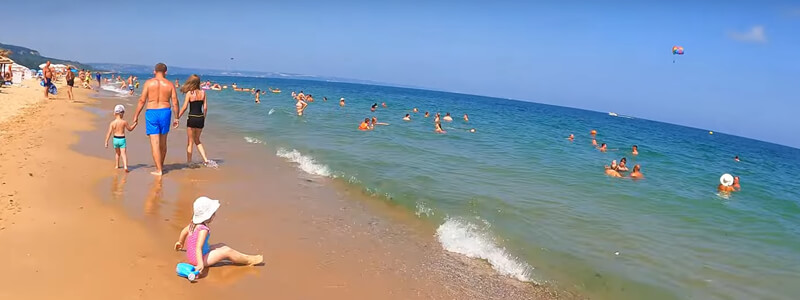Best Beach Destinations in Bulgaria
Despite being the site of extensive Black Sea package resorts and the source of several good wines, Bulgaria all too often dismissed as the dour place it was before 1989, when it served as one of the Soviet Union’s most loyal East European allies.
As with many little-known destinations, however, there’s a great deal to discover here: much of Bulgaria is like an open-air museum of Balkan culture, with beautifully decorated churches, fine mosques, wonderfully preserved rustic villages and a great deal of enduring folklore.
The mountainous interior makes it one of the top hiking destinations of Europe, while over on the Black Sea coast, the white-sand beaches are just as magnificent in reality as they look in the tourist brochures.
Albena
The step-pyramid architecture of Albena ‘s hotels marks it out as one of the more architecturally inventive of Bulgaria’s purpose-built resorts; it’s also the most efficiently run, the cleanest, and by far the most expensive.
It’s an attractive, if a little sterile-looking place, with well-tended flowerbeds and lawns lying behind an extensive and usually crowded beach, lined with bars and kebab stalls, while the range of activities on offer here is second to none.
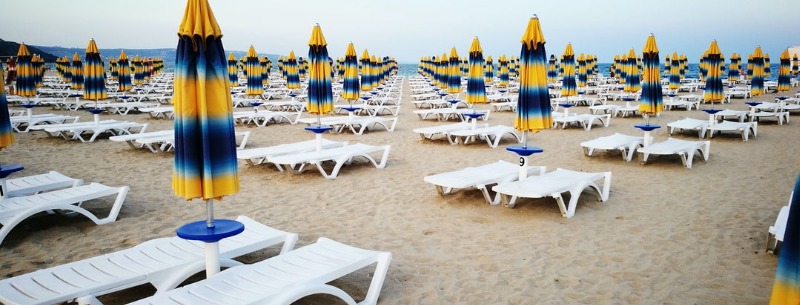
Bordering the resort to the south is an area of swamp-like semi-submerged forest known as the Balta; access to this alluring landscape is via the asphalted track to the Gorski Kat restaurant.
Albena boasts at least five sailing and windsurfing schools strung out along the beach, offering boat and board rental from about US$5 per hour, as well as week-long courses (around US$100 for fourteen hours’ tuition).
There’s also a scuba-diving center, with prices starting at US$20 for an introductory session, and US$100 for a week-long course.
The resort’s riding center is currently the best in Bulgaria, with twelve hours of tuition costing around US$100, and a variety of rides (ranging from one-hour “gallops” to day-long picnics) laid on for all abilities.
Bourgas
Bourgas is the fourth largest city in Bulgaria, situated in the south-eastern part of the country.
Overlooked by most tourists and often dismissed as a polluted industrial dump, to be passed through quickly on the way to more desirable locations along the coast, Bourgas is a surprisingly attractive city, which makes a welcome break from the crowds and commercialism of the nearby seaside resorts.
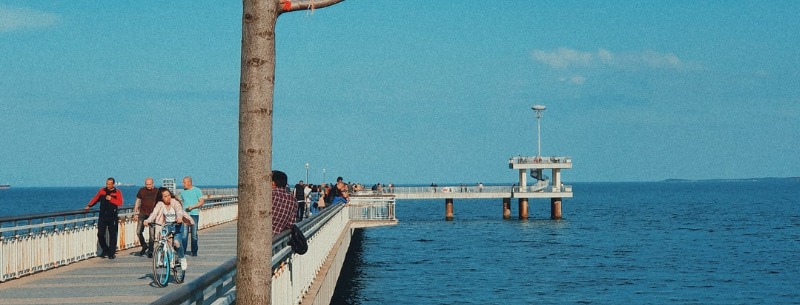
Though the city’s suburbs are certainly dreary, the center is pleasantly urbane and tourist-friendly, due to recent efforts to improve its seedy image.
As the site of an oil refinery and associated chemical plants, Burgas is far more industrial than any of its neighbors on the coast, and its deep harbor is home to Bulgaria’s oceanic fishing fleet.
The presence of visiting ships and passing tourists gives the town a certain cosmopolitanism – especially in late August, during the folk festival – but nothing to compare with the cultural life of Varna.
There are some splendid views of the sea from the terraces, while the shady avenues provide a refreshing respite from the oppressive summer heat. Steps from here descend to the city’s long sandy beach, patrolled by lifeguards and fringed by more restaurants and bars.
The sand on the town beach is typically black (iron and titanium content). The beach strips in the vicinity are wide and long. Open salt-pits can be observed near the town.
Strong winds along this coast make windsurfing a popular activity, and boards may be hired from the Morski Klub – the poor water quality failing to dampen the spirits of the locals, who appear perfectly happy to share the bay with oil tankers and cargo vessels.
Golden Sands
Tourists generally balk at pronouncing Zlatni pyasвtsi, so most Bulgarians along the coast will understand if you say “Goldstrand” or Golden Sands instead.
It’s a polyglot place: of all the nationalities here, Germans predominate, and two members of the 2nd of June terrorist group were actually arrested here in 1978 after being recognized by a West German prison warder who, like them, was on holiday.
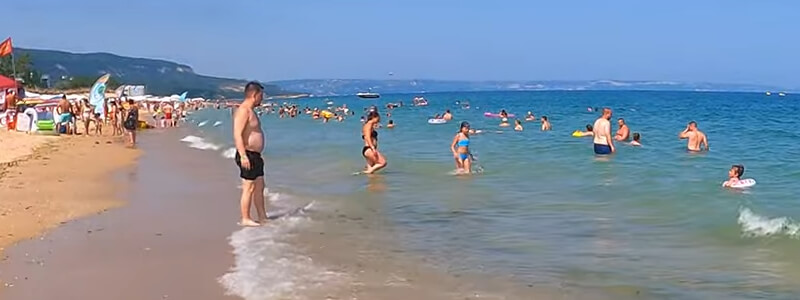
The resort’s myriad hotels occupy a wooded, landscaped strip behind Zlatni pyasatsi’s greatest asset, its beach: a soft, pale golden expanse 4km long, sloping gently into an undertow-less sea.
Golden Sands also offers a wide range of bars, restaurants and discos; and activities such as scuba diving, waterskiing and paraskiing are offered by kiosks along the beach.
The strolling areas behind the beach feature well-tended gardens, outdoor pools, and plenty of sports facilities for children.
A group of hotels at the southern end of the resort operates separately under the name of the Riviera Holiday Club, site of the Imperial hotel.
Nessebar
Three kilometers south of Sunny Beach, a slender isthmus connects the old town of Nessebar (ancient Mesembria) with the mainland, ensuring a constant stream of visitors to what was once undoubtedly a beautiful spot.
Harbouring the best of the coast’s nineteenth-century wooden architecture, as well as a unique collection of medieval churches, it’s easy to see why Nessebar has become the most publicized (and commercialized) of Bulgaria’s Black Sea attractions.
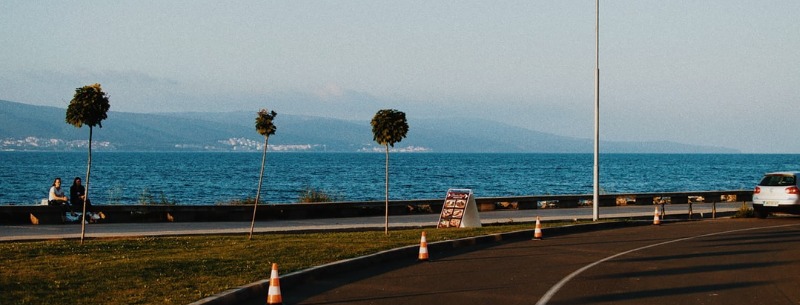
At the height of summer the town can be a little oppressive, its narrow cobbled streets crammed with packs of tourists, countless tacky souvenir stalls, and persistent restaurant touts, but a willingness to put up with the crowds is rewarded by Nessebar’s many fine sights.
Nowadays Nessebar depends on tourism, its fishing fleet unable to employ enough of the 7000 inhabitants, of whom about 3000 live on the peninsula, the remainder on the mainland.
Pomorie
South from Nessebar, beyond Aheloi, the road passes the salt-pans surrounding Lake Pomorie, one of Bulgaria’s main sources of salt, and renowned for its therapeutic mud baths . Sited upon a peninsula beside the lake, Pomorie (pronounced “Pah-mor-ye”) would probably resemble.
Nessebar if it hadn’t been gutted by fire in 1906 and rebuilt in concrete during the 1950s. Pomorie’s ancient precursor, Anchialos, was founded by the Apollonians, became rich through the export of salt and wine, and found favor in the Roman era as an exclusive health resort.
The lakeside sanatorium remains important to the local economy, as does another specialty of long standing, the locally produced aromatic dry Pomoriiski Dimyat wine. Apart from an abundance of private rooms and an underused stretch of beach, however, there’s little in modern Pomorie to justify a stopover.
Pomorie’s beach occupies a four-kilometer-long sand bar which stretches north from the tip of the peninsula, and separates the town’s famous salt pans from the open sea.
Primorsko
The peninsula village of Primorsko commands the northern approaches to another glorious curve of a beach, running along the bay to the south.
It’s a dusty place blighted by uncontrolled holiday-house construction, but its popularity as an inexpensive resort for Bulgarians and Czechs gives the place an appealing vigor.
Most of the accommodation is in private rooms (available from a kvartirno byuro on the main square where Sozopol-Tsarevo buses stop), although there are a couple of smallish hotels in the grid of streets that form the village center. Paths lead downhill from the square to the beach, where you’ll find a small cluster of bars and grilled-fish restaurants .
Two kilometres south of Primorsko lies the grandly titled International Youth Centre, a hotel complex that originally bore the name of Georgi Dimitrov and was intended as a holiday camp for Eastern bloc students.
Despite commanding direct access to the southern end of Primorsko beach, the resort remains strangely lifeless, with a couple of uninspiring hotels and a neighboring bungalow settlement (US$9-18).
Riviera
Riviera Holiday Club is located 17 km north-east of Varna. It is very close to Golden Sands resort, both resorts are within minutes walking from each other.
Riviera is the ideal spot for family tourism offering quiet atmosphere, relaxation and comfort.
Riviera holiday club and the resort of Golden Sands merge into each other, so the Riviera is a quiet oasis within the area of the busy resort of Golden Sands.
During the summer months the beaches of Riviera have very few people, while the neighbor ones of Golden Sands are full of people.
Sinemorets
From Ahtopol the coast road heads south through a forest thick with Strandzha oak, before dropping down to cross the reed-shrouded River Veleka.
On the opposite bank stands the windswept hilltop settlement of Sinemorets, a village that until 1989 was out-of-bounds to outsiders due to its proximity to the Turkish border. Since then it’s been discovered by beach-hoppers, and wealthy city-dwellers building seaside villas and second homes.
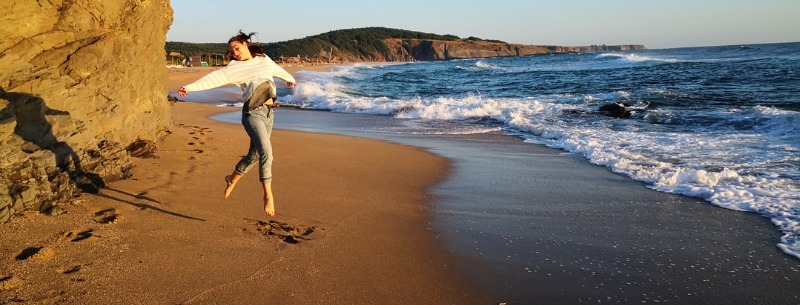
It’s a strange mixture of bucolic village and building site, the kind of place where expensive cars trundle down the dirt tracks that serve as streets, and imported drinks are doled out from hastily erected shacks.
Sinemorets’s new-found fame rests on its two beaches: the south beach, accessible by a track which leads eastwards through the village towards the headland before veering south, is a dazzling expanse of fine white sand bordered by rocky promontories.
It’s the kind of place that attracts younger, liberal-leaning Bulgarians – bathing nude here will hardly raise an eyebrow.
More spectacular still is the beach to the north, a kilometer-long sand bar that slows the progress of the River Veleka towards the sea.
Framed by low green hills, it’s one of the most beautiful spots on the Black Sea coast.
Sozopol
There are only two settlements of any size on the south side of Burgas bay: Kraimorie, a naval town serving a big base on the nearby peninsula of Aitia, and Chernomorets, a small beach resort with a neatly manicured park, numerous private rooms and a campsite, the Gradina, located on the beach to the south.
Both towns are served by hourly buses on the Burgas-Sozopol route, but it’s better to press on to the small fishing port of Sozopol , the favored resort of Bulgaria’s literary and artistic set since the beginning of the last century, and popular with German and Eastern European package tourists since the 1970s.

An engaging huddle of nineteenth-century houses on a rocky headland, backed up by fine beaches, scores of bars and restaurants, and a lively promenade, Sozopol is fast overtaking Nessebar as the coast’s prime attraction.
There are two beaches with a small admission charge: one nestling within the curve of a sheltered bay where the peninsula joins Harmanite; the other further south, beyond a headland.
Slightly incongruously, its harbor also serves as one of Bulgaria’s chief naval bases, with ranks of gunboats anchored off the neighboring island of Sveti Kirik.
For the first ten days of September, Sozopol hosts the Apollonia Arts Festival, comprising classical music, jazz, theatre and poetry, and frequent open-air pop concerts take place throughout the summer.
Be warned that finding accommodation can be difficult in July and August, when the tourist season is at its height.
Sunny Beach
Slanchev Bryag – called Sonnenstrand by the Germans and Sunny Beach by the Brits – is Bulgaria’s largest, and least atmospheric, coastal resort.
It’s a vast, only partly shaded expanse of hotels interspersed with restaurants, snack bars and other places to spend money, and on (rare) rainy days its soullessness quickly becomes apparent.
Its main drawback is sheer size: it’s impossible to explore the resort’s facilities without shuttling up and down the main strip by bus, and the anonymous gridiron-style layout of the place can be disorientating.
While many of the resort’s individual hotels (especially those favored by Western package groups) have been tastefully refurbished, the general infrastructure – the roads, pavements and stretches of park – remain poorly cared for.
Independent travelers would be better off staying in nearby Nesebar, a perfectly handy base from which to make use of Sunny Beach’s admittedly excellent eight-kilometer-long stretch of sand – which has received the coveted international Blue Flag award – and for taking advantage of some of the liveliest nightlife to be found on the Black Sea Coast.
Varna
Back in the days when Varna was a cholera-ravaged Ottoman garrison town, British troops passed through on their way to the Crimean War; one of them, Major General J R Hume, described the town as “no paradise, a wretched place with very few shops”.
Not so long ago many foreign visitors may have said the same, but in recent years Bulgaria’s third city has struggled more than most to Westernize.
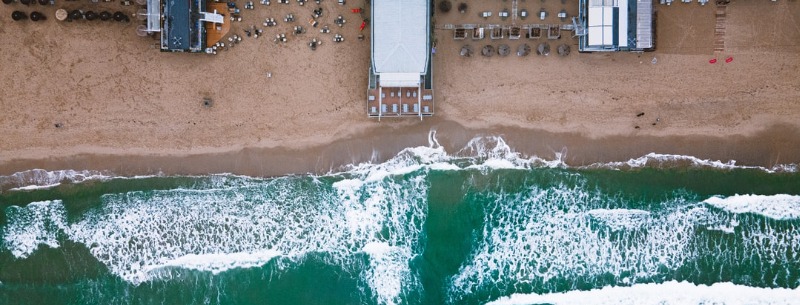
Signs of change are everywhere, from the giant advertising hoardings splashed with Western brand names to the numerous street traders, hawking all kinds of touristry knick-knacks.
The streets are lined with fashion boutiques, exchange bureaux, Japanese car showrooms, video-rental stores, and fast-food outlets staffed by mini-skirted waitresses, while baseball-capped youths practice skateboarding manoeuvres in the main square, or stroll along the main boulevards in a range of pseudo-designer summer threads more reminiscent of west coast USA than some far-flung eastern outpost of Europe.
As well as being a beach resort in its own right, Varna offers access to the purpose-built tourist complexes of Sveti Konstantin (formerly “Druzhba”) – now swallowed up by Varna’s suburbs – Sunny Day, Golden Sands and Albena to the north.
Also within easy reach are quieter seaside villages like Kranevo, and popular day-trip destinations such as the nature reserve at Kamchiya the rock monastery of Aladzha, and Queen Marie of Romania’s former palace at Balchik.
